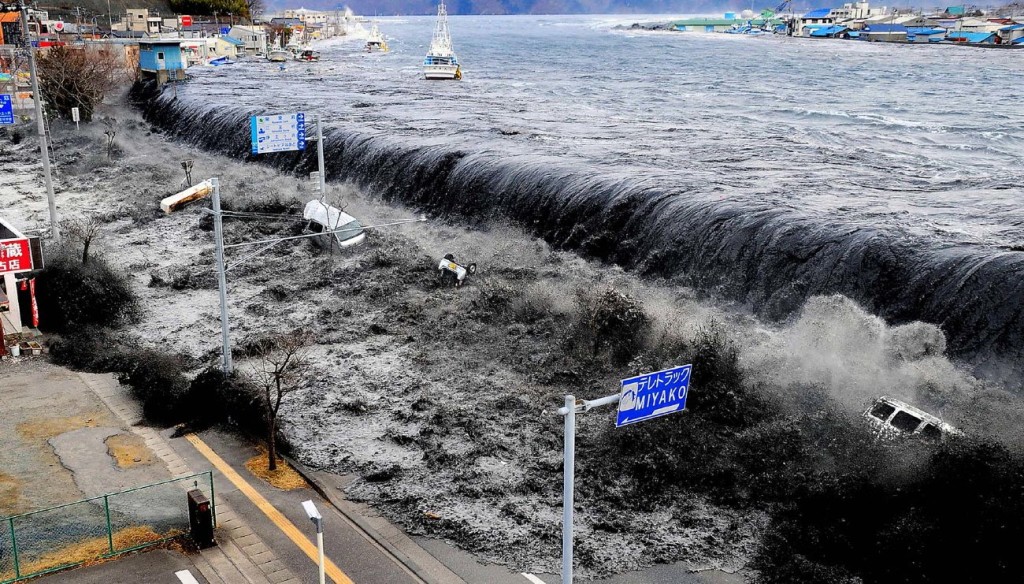
Against the cataclysmic forces of Nature, few have responded as well as the Japanese (courtesy of Joseph Friedman)
Have you wondered what made the Japanese such a resilient and robust group of people? How do they overcome the challenges of living in one of the most disaster prone areas of the world?
Often, it is in the worst of times that you see the best in people. Nothing is more true than how the Japanese faced the 2011 Tōhoku earthquake and tsunami on the Northeast coast of Japan.
According to this wonderful post from Garr Reynolds’ of Presentation Zen, the Japanese have demonstrated such exemplary traits of strength despite facing tremendous adversity because of the following three qualities:
1) Construction-destruction-construction
In Japanese companies, people are often transferred to different parts of the company. The intention of doing so is to help them to learn different aspects of the business.
This process of tearing down and building up again seems to be part and parcel of life in Japan.
According to Reynolds, the philosophy of construction-destruction-construction is also associated with a culture that valued personal responsibility, diligence, humility, a sense of belonging, and contribution to a community.
2) Fall down seven times, get up eight (七転び八起き)
According to a Japanese proverb: “Nana korobi ya oki” (literally: seven falls, eight getting up) our Japanese friends knew that no matter how many times you get knocked down, you get up again.
If at first you don’t succeed, try try again. And you should not just do it once, but multiple times.
This ethic of bouncing back is strongly reinforced in all facets of Japanese culture. It can be seen in Japanese education, business, sports, and martial arts.
3) Never give up!
This is related to the one above and is the spirit of gambaru (頑張る). It dealt with the issue of tenacity and sticking persistently and doggedly until a task is done.
I like the literal term “gambatte” which equivalent to the Chinese saying “jiayou” (加油). This means “fight on!” and “never give up!”
In good times or bad, we shouldn’t complaint, behave selfishly or do things which don’t contribute to the overall good. Rather, we should keep fighting on to slay that negative or defeatist attitude.
Other than the above, I’d like to propose the following additional points for our learning purposes:
4) Extreme stoicism
Being able to remain steadfast despite their circumstances, the Japanese are legendary in their ability to remain calm under pressure.
Few need to be reminded of how stoic the Japanese have remained in the face of tremendous adversity.
From the replies of ordinary Japanese affected by the disaster to the media, to the way they behaved in orderly fashion, you can tell that they are a people who can focus on what needed to be done as opposed to wailing and complaining over the calamities that befell them.
5) Zen thinking and mindfulness
Embracing the principles of Zen and mindfulness, the Japanese are often able to elevate beyond their immediate circumstances.
Through adopting a meditative attitude while being mindful of their thoughts and feelings, they are able to transcend their emotions and focus on the task at hand.
I guess this also allowed the Japanese to separate themselves from the situation. By doing so, they were able to prevent themselves from being overcome by debilitating grief or utter panic. Through tuning out all negative emotions and destructive feelings, they emerged more strongly than before.
6) Community before self (Confucian beliefs)
Finally, it is clear that the spirit of sacrifice and the Confucian belief of putting the community before self is imbued in many Japanese.
The heroic workers at the Fukushima Nuclear Plant (known as the Fukushima 50) have clearly demonstrated this virtue by being willing to step into eminent danger despite knowing the huge risks they are putting themselves into. This self-sacrificial belief is highly noble and worthy to be emulated.
Shining exemplars of high adversity quotient
From the experience seen in the Tohoku Earthquake and Tsunami, we can tell that the Japanese have high levels of Adversity Quotient (AQ). This is defined by Dr Paul Stoltz to contain four key elements:
- Control: The extent to which you perceive how well you can influence whatever happens next. Folks with high AQs have a strong influence over their destinies post disaster.
- Ownership: The likelihood that you will actually do anything to improve the situation, regardless of your formal responsibilities. Folks with high AQs have a strong sense of responsibility and ownership.
- Reach: The extent to which you perceive an adversity to “reach into” or affect other aspects of the situation and beyond. Folks with high AQs tend to perceive the reach of a disaster to be limited.
- Endurance: The length of time whereby you perceive the situation or adversity will last or endure. Folks with high AQs know that any adverse situation will only be temporal.
From the way the Japanese respond and react to natural disasters, we can tell that they possess all four qualities – Control, Ownership, Reach, and Endurance – in spadefuls.
(You can read more about resilience and adversity in my blog post “Will You Do Whatever It Takes?”)
We certainly have a lot to learn from the stoicism, resilience and self-sacrificial spirit of the Japanese, especially here in Singapore!
Having said the above, it would still take a huge amount of willpower, fortitude, and “can-do” spirit to rebuild Japan after the huge damage inflicted by Mother Nature. Life may never be the same again for many.
However, I am fully confident that our friends from the Land of the Rising Sun will ascend yet again and be the economic and cultural powerhouse of the East, shaping trends, tastes and technology.
